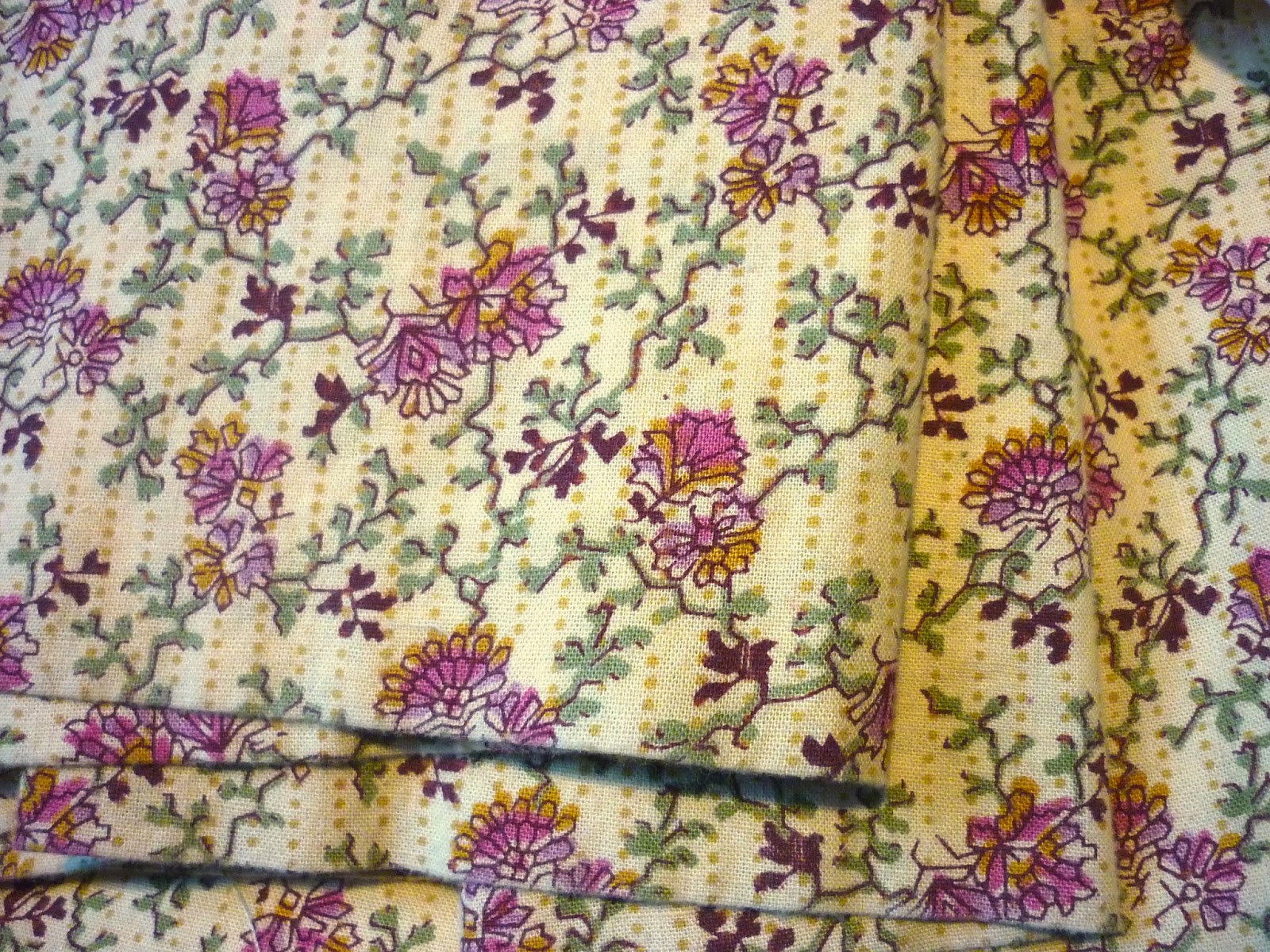| Mourning veil |
| Fashion veil |
I finished a veil for my bonnet the night before and tried it out that day. I am pleased to report that it works splendidly! While bonnet veils are most commonly thought of as mourning veils, such as the one on the right, ladies also used fashion veils (left) for modesty and to keep the sun off their faces. They work rather like sunglasses do today. I didn't feel like I was squinting in the sun at any point during the day. Mission accomplished! Plus, it was just fun to wear. I think veils add a bit of mystery and intrigue to the wearer.
While I am hardly an expert on the matter, it is my understanding that mourning veils are thicker and generally opaque from the outside whereas fashion veils are quite see through and often have a decorative lace edge on them. Fashion veils are often semi-circular or crescent shaped while mourning veils are square or rectangular.
 The veil in the picture on the left is an original that was being sold on ebay a while back and the one I based my own veil off. I found some dotted tulle at the fabric store and some black lace and carefully basted the two together.
The veil in the picture on the left is an original that was being sold on ebay a while back and the one I based my own veil off. I found some dotted tulle at the fabric store and some black lace and carefully basted the two together.I wasn't sure how sewing the veil to my bonnet would work, and if the veil didn't work well, I wouldn't want it on all day, so I ended up using straight pins to pin in to the brim of my bonnet, which worked well. It's quite fun to wear!
And one more inspiration picture, just because. :)
---- ------- ----
In June, my family took a much-awaited trip out to Gettysburg! I have been wanting to go for a few years now, so I was very excited to go! I finished sewing a dress for Mom in the car on the way out (nothing like procrastination! ;) ), so she and I both wore our period clothing while touring the battlefield. It certainly makes the past come alive - to be in the very place where so much conflict and terror took place wearing the same clothes the citizens of Gettysburg would have worn... I highly recommend it!
 |
| Some of the lovely painted buildings in town. |
 |
| That three-story brick building was the one that Abraham Lincoln slept in the night before he gave his famous address in Gettysburg. |
To see the sheer number of graves at the Gettysburg National Cemetery was quite sobering. The picture below shows maybe only a twentieth of the graves there.
The above picture was, if I remember correctly, at Little Round Top, somewhere along the left-most flank of the Union Army the second day of the battle. Colonel Chamberlain was in command of the troops.
The view from the top of Little Round Top.
Looking up towards Little Round Top. Now imagine that you are an infantryman wearing a wool uniform in the summer heat and you have to climb up there to take the hill while carrying your knapsack on your back and your rifle in your hands. And to top it all off, there are men holed up at the top shooting down on you as you climbed.
(Not my picture!)
Monument to the Pennsylvanian troops...
...With a great but very windy view up top!
An original oxidized cannon
This picture shows the 'High Water Mark' of the Confederacy. On the third and final day of the battle of Gettysburg, the Union troops held their position behind the stone wall. While the Confederate forces broke over the wall a few times, the Union ultimately held their ground.
The edge of the forest, a mile away, was where the Confederates started their charge.
Mom and myself. Doesn't she look great? :)
Also while we were in Gettysburg, we stopped by the Jennie Wade house. Jennie Wade was the only civilian to be killed during the battle of Gettysburg. Her sister with a recently born daughter, along with their mother and Jennie stayed in this house as the battle raged on outside. One morning Jennie was kneading bread for the soldiers when a bullet passed through two wooden doors and struck her in the heart, killing her instantly.
There were still bullet holes in the bricks, both inside and outside. In the picture below you can see some in the mantle above the fireplace.
Jennie Wade is on the right in this picture.
All in all, it was a fun trip. I enjoyed it all, but I think my favorite part was seeing Little Round Top. We watched the movie Gettysburg before we left, so everyone knew what had happened where. Coldwater is the only reenactment I've been to this year, so I am looking forward to Charlton Park in two more weeks! I'll definitely be there Sunday, not sure about Saturday yet. Until then, dear readers, have a fabulous summer! :)






































